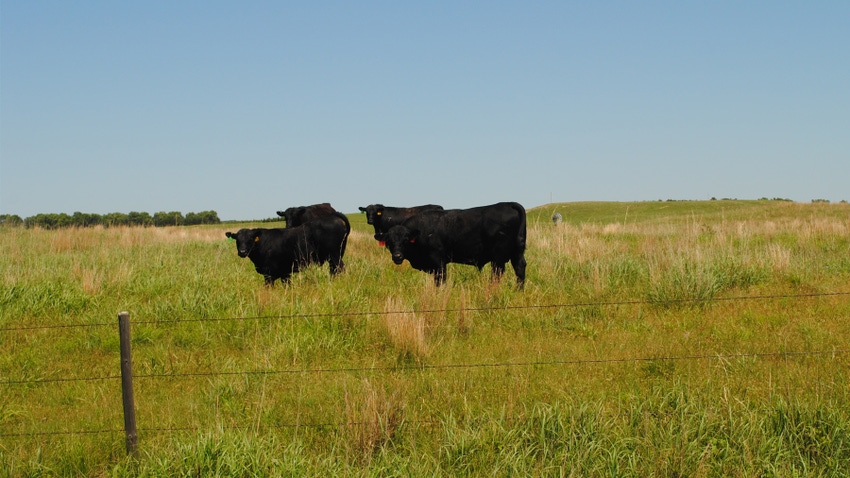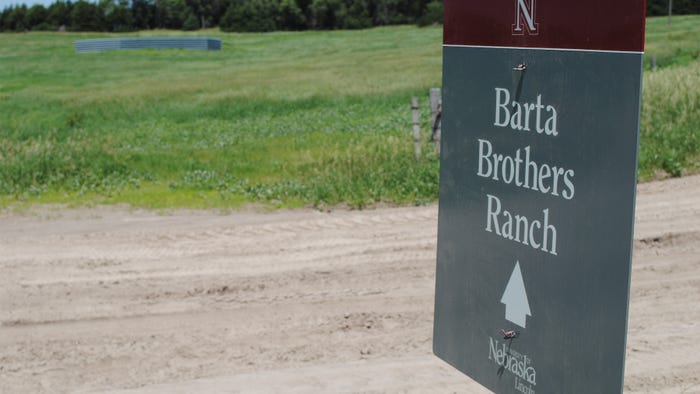
Nebraska and the Plains states have had their fair share of wildfires over the past few years. So, the question is, “Do these fires have any positive impacts on grazing land?”
Of course, the answer is “yes,” if we can take the “wild” part out of the fires and use fire in a prescribed way to irradicate invasive woody species such as eastern red cedar, enhance the biological diversity of the rangeland, and increase or at least maintain the weights of cattle grazing those lands.
That’s what a stakeholder group that serves as an advisory board at the University of Nebraska Barta Brothers Ranch near Rose, Neb., wanted to study, using collaborative adaptive management to put the hypothesis to the test and collect data that could one day help producers.
The stakeholder group at BBR consists of local ranchers and other Sandhills interests, including nongovernmental organizations, state and federal agency personnel.
“This group helped generate research questions, like ‘How can we maintain biodiversity, increase rangeland heterogeneity and reduce woody invasive species, all while being neutral or positive in the terms of financial returns?’” says Craig Allen, UNL natural resources sciences professor, who teaches graduate-level courses in resilience and biological invasions.
“Adaptive management treats management actions as hypotheses, and the management option chosen was a modified patch burn grazing system,” Allen adds. “Results of this management are compared with ‘business-as-usual’ rotational grazing systems and assessed by the stakeholder group each year. Adaptive management is stakeholder driven and led, and results and management decisions are reviewed each year.”
What is patch burn?
According to Allen, patch burn grazing implements prescribed fire as a management tool, with the location of burned patches changing each year.
“Cattle are attracted to the more nutritious forage on the burned sites and selectively graze these at higher rates than adjacent unburned pasture,” he says. “We are utilizing a modified patch burn approach, where the modification works within existing rotational grazing paddocks. In our case, we are using a four-paddock pasture, and burning a new site each year such that in four years the entire pasture is burned. After the burn, all gates within all paddocks are opened, and cattle are allowed to graze as desired, in the burned or unburned paddocks.”

STAKEHOLDER IDEA: A stakeholder group at BBR came up with the study concept that is being researched at the University of Nebraska ranch facility.
To evaluate results from this approach in 2022, remotely sensed aerial imagery was one of the important tools employed, along with on-the-ground measurements.
“It is an excellent tool to capture spatial change at larger scales,” Allen says. “When collected in conjunction with on-the-ground measurements, we can explore the relationship between the imagery and diversity of vegetation on the ground, and ultimately aim to use remote sensing as a proxy for time-consuming and difficult vegetation sampling.”
Remote sampling provides a view of the spatial context of the ranch, Allen says — for example, showing how close large patches of eastern red cedar are, which may be a threat in the future.
Positive results
“We were pleased with last year’s results, though tentative, and need confirmation from this current and subsequent years; cattle selected to graze on our burn as much as two times more than in unburned paddocks,” Allen says, “and at the end of the season weighed, on average, 43 pounds more than cattle in the standard rotational treatment.”
There was negligible wind erosion, and litter and standing dead vegetation was reduced on burned sites, but forage production was not adversely affected, Allen notes.
“Bird diversity and community composition differed on burned and unburned sites,” he adds. “Our limited data suggests that a modified patch burn management approach does enhance heterogeneity and biodiversity while leading to increased cattle weight gain — but we need more data to state that with a high degree of confidence.”
What is the bottom line of this research for producers? “We implemented a modified patch burn because this approach is easily integrated into existing rotational cattle management,” Allen says. “Our results are preliminary. We plan to continue burns this year and into the future but suggest benefits to ranching bottom lines and to biodiversity, while reducing woody and other invasive species.
“Implementing experiments in an adaptive management framework enables experimentation while management continues and thus speeds learning, and involves a greater community of stakeholders, which allows better uptake of learning from our management experiments.”
Learn more at grassland.unl.edu.
About the Author(s)
You May Also Like






